1. Bolger WE, Butzin CA, Parsons DS. 1991; Paranasal sinus bony anatomic variations and mucosal abnormalities: CT analysis for endoscopic sinus surgery. Laryngoscope. 101(1 Pt 1):56–64. DOI:
10.1288/00005537-199101000-00010. PMID:
1984551.
2. Subramanian S, Lekhraj Rampal GR, Wong EF, Mastura S, Razi A. 2005; Concha bullosa in chronic sinusitis. Med J Malaysia. 60:535–9. PMID:
16515102.
3. Hatipoğlu HG, Cetin MA, Yüksel E. 2005; Concha bullosa types: their relationship with sinusitis, ostiomeatal and frontal recess disease. Diagn Interv Radiol. 11:145–9. PMID:
16206055.
4. Flint P, Haughey B, Lund V, Niparko J, Robbins K, Thomas J, Lesperance M. 2015. Cummings otolaryngology: head & neck surgery. 6th ed. Elsevier/Saunders;Philadelphia: p. 658–78.
5. Tonai A, Baba S. 1996; Anatomic variations of the bone in sinonasal CT. Acta Otolaryngol Suppl. 525:9–13. PMID:
8908262.
6. Al-Qudah MA. 2010; Anatomical variations in sino-nasal region: a computer tomography (CT) study. J Med J. 44:290–7.
7. Stammberger H, Hawke M. 1993. Essentials of endoscopic sinus surgery. 2nd ed. Mosby;St. Louis: p. 1–108.
8. Mamatha H, Shamasundar NM, Bharathi MB, Prasanna LC. 2010; Variations of ostiomeatal complex and its applied anatomy: a CT scan study. Indian J Sci Technol. 3:904–7. DOI:
10.17485/ijst/2010/v3i8.17.

9. Cukurova I, Yaz A, Gumussoy M, Yigitbasi OG, Karaman Y. 2012; A patient presenting with concha bullosa in another concha bullosa: a case report. J Med Case Rep. 6:87. DOI:
10.1186/1752-1947-6-87. PMID:
22448660. PMCID:
PMC3338398.

10. Ahmed EA, Hanci D, Üstün O, Aydogdu I, Özdemir E, Karaketir S, Uyar Y, Kumral TL. 2018; Surgıcal techniques for the treatment of concha bullosa: a systematic review. Otolaryngol Open J. 4:9–14. DOI:
10.17140/OTLOJ-4-146.

11. Cohen SD, Matthews BL. 2008; Large concha bullosa mucopyocele replacing the anterior ethmoid sinuses and contiguous with the frontal sinus. Ann Otol Rhinol Laryngol. 117:15–7. DOI:
10.1177/000348940811700104. PMID:
18254365.

13. Al-Sebeih KH, Bu-Abbas MH. 2014; Concha bullosa mucocele and mucopyocele: a series of 4 cases. Ear Nose Throat J. 93:28–31. DOI:
10.1177/014556131409300107. PMID:
24452890.
14. Pérez-Piñas , Sabaté J, Carmona A, Catalina-Herrera CJ, Jiménez-Castellanos J. 2000; Anatomical variations in the human paranasal sinus region studied by CT. J Anat. 197(Pt 2):221–7. DOI:
10.1017/S0021878299006500. PMID:
11005714. PMCID:
PMC1468121.
15. Smith KD, Edwards PC, Saini TS, Norton NS. 2010; The prevalence of concha bullosa and nasal septal deviation and their relationship to maxillary sinusitis by volumetric tomography. Int J Dent. 2010:404982. DOI:
10.1155/2010/404982. PMID:
20862205. PMCID:
PMC2938434.

16. Anbiaee N, Khodabakhsh R, Bagherpour A. 2019; Relationship between anatomical variations of sinonasal area and maxillary sinus pneumatization. Iran J Otorhinolaryngol. 31:229–34. PMID:
31384589. PMCID:
PMC6666940.
17. Kalaiarasi R, Ramakrishnan V, Poyyamoli S. 2018; Anatomical variations of the middle turbinate concha bullosa and its relationship with chronic sinusitis: a prospective radiologic study. Int Arch Otorhinolaryngol. 22:297–302. DOI:
10.1055/s-0038-1625978. PMID:
29983772. PMCID:
PMC6033609.

18. Bahemmat N, Hadian H. 2016; The frequency of nasal septal deviation and concha bullosa and their relationship with maxillary sinusitis based on CBCT finding. Int J Med Res Health Sci. 5:152–6.
19. Stallman JS, Lobo JN, Som PM. 2004; The incidence of concha bullosa and its relationship to nasal septal deviation and paranasal sinus disease. AJNR Am J Neuroradiol. 25:1613–8. PMID:
15502150. PMCID:
PMC7976404.
20. Maru YK, Gupta V. 2001; Anatomic variations of the bone in sinonasal C.T. Indian J Otolaryngol Head Neck Surg. 53:123–8. DOI:
10.1007/BF02991504. PMID:
23119772. PMCID:
PMC3450832.

21. Gupta AK, Gupta B, Gupta N, Tripathi N. 2012; Computerized tomography of paranasal sinuses: a roadmap to endoscopic surgery. Clin Rhinol Int J. 5:1–10. DOI:
10.5005/jp-journals-10013-1106.

22. Al-Rawi NH, Uthman AT, Abdulhameed E, Al Nuaimi AS, Seraj Z. 2019; Concha bullosa, nasal septal deviation, and their impacts on maxillary sinus volume among Emirati people: a cone-beam computed tomography study. Imaging Sci Dent. 49:45–51. DOI:
10.5624/isd.2019.49.1.45. PMID:
30941287. PMCID:
PMC6444003.

24. Ahmed DF. 2020; Prevalence and correlation of nasal septum deviation, concha bullosa and maxillary sinusitis in a group of adult Egyptian population: a retrospective CBCT study. Egypt Dent J. 66:143–52. DOI:
10.21608/edj.2020.77528.

25. Kinsui MM, Guilherme A, Yamashita HK. 2002; Anatomical variations and sinusitis: a computed tomographic study. Rev Bras Otorrinolaringol. 68:645–52. DOI:
10.1590/S0034-72992002000500008.
26. Bagri N, Kavirajan K, Chandra R, Agarwal Y, Gupta N, Mandal S. 2019; Nasal septal angle deviation: effect on lateral wall in nasal obstruction. Int J Res Med Sci. 7:90–5. DOI:
10.18203/2320-6012.ijrms20185095.

27. Van der Veken P, Clement PA, Buisseret T, Desprechins B, Kaufman L, Derde MP. 1989; [CAT-scan study of the prevalence of sinus disorders and anatomical variations in 196 children]. Acta Otorhinolaryngol Belg. 43:51–8. Dutch. PMID:
2801096.
28. Javadrashid R, Naderpour M, Asghari S, Fouladi DF, Ghojazadeh M. 2014; Concha bullosa, nasal septal deviation and paranasal sinusitis; a computed tomographic evaluation. B-ENT. 10:291–8. PMID:
25654953.
29. Rajashree , Ali FA, Deepthi P, Viswanatha B. 2018; Impact of concha bullosa on osteomeatal complex drainage and septal deviation. Res Otolaryngol. 7:1–4.
30. de Araújo Neto SA, de Sá Leite Martins P, Souza AS, Baracat ECE, Nanni L. 2006; The role of osteomeatal complex anatomical variations in chronic rhinosinusitis. Radiol Bras. 39:227–32. DOI:
10.1590/S0100-39842006000300014.
31. Tunçyürek Ö, Eyigör H, Songu M. 2013; The relationship among concha bullosa, septal deviation and chronic rhinosinusitis. J Med Updates. 3:1–7. DOI:
10.2399/jmu.2013001002.

32. Unlü HH, Akyar S, Caylan R, Nalça Y. 1994; Concha bullosa. J Otolaryngol. 23:23–7. PMID:
8170015.
33. Scribano E, Ascenti G, Loria G, Cascio F, Gaeta M. 1997; The role of the ostiomeatal unit anatomic variations in inflammatory disease of the maxillary sinuses. Eur J Radiol. 24:172–4. DOI:
10.1016/S0720-048X(96)01073-X. PMID:
9232387.

34. Mokhasanavisu VJP, Singh R, Balakrishnan R, Kadavigere R. 2019; Ethnic variation of sinonasal anatomy on CT scan and volumetric analysis. Indian J Otolaryngol Head Neck Surg. 71(Suppl 3):2157–64. DOI:
10.1007/s12070-019-01600-6. PMID:
31763314. PMCID:
PMC6848680.

35. Alshaikh N, Aldhurais A. 2018; Anatomic variations of the nose and paranasal sinuses in Saudi population: computed tomography scan analysis. Egypt J Otolaryngol. 34:234–41. DOI:
10.4103/1012-5574.244904.

36. Gouripur K, Udaya Kumar M, Janagond AB, Elangovan S, inivasa V Sr. 2017; Incidence of sinonasal anatomical variations associated with chronic sinusitis by CT scan in Karaikal, South India. Int J Otorhinolaryngol Head Neck Surg. 3:576–80. DOI:
10.18203/issn.2454-5929.ijohns20172291.

37. Calvo-Henriquez C, Ruano-Ravina A, Martinez-Capoccioni G, Martins-Neves S, Mayo-Yáñez M, Alosilla-Sandoval S, Junquera-Olay S, Varela E. 2020; Is an increase in the depth of the olfactory fossa caused by excessive vertical facial growth? A radiological study. B-ENT. 16:25–30. DOI:
10.5152/B-ENT.2020.19013.

38. Sirik M, Inan I. 2019; Evaluation of the relationship between concha bullosa and nasal septum deviation with diameter of nasolacrimal duct. Ann Med Res. 26:209–12.

39. Fatterpekar GM, Delman BN, Som PM. 2008; Imaging the paranasal sinuses: where we are and where we are going. Anat Rec (Hoboken). 291:1564–72. DOI:
10.1002/ar.20773. PMID:
18951498.

40. Orhan K, Aksoy S, Oz U. Gendeh BS, editor. 2017. CBCT imaging of paranasal sinuses and variations. Paranasal Sinuses. IntechOpen;London: p. 57–77. DOI:
10.5772/intechopen.69090.

41. Wadhwa S, Sharma N, Garg U, Dutta P. 2017; Concha bullosa: types and relationship with chronic sinusitis. Int J Otorhinolaryngol Head Neck Surg. 3:482–5. DOI:
10.18203/issn.2454-5929.ijohns20172651.

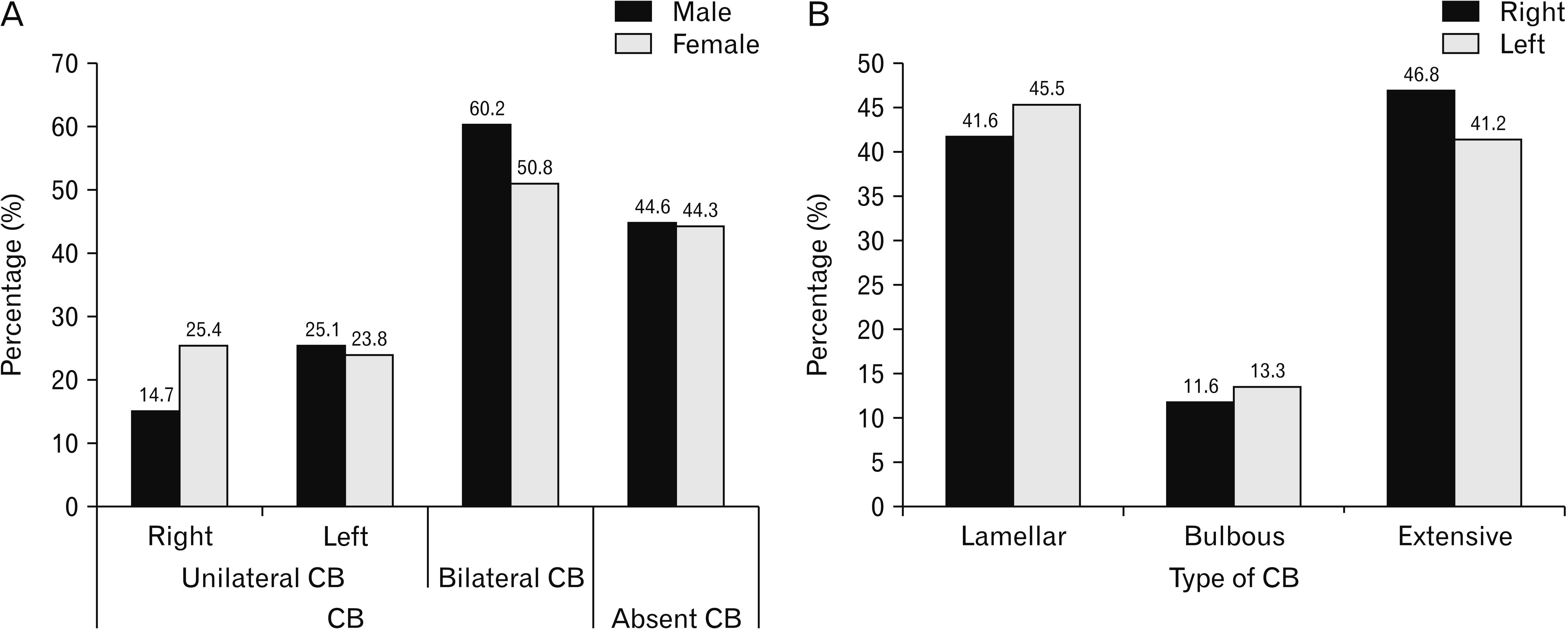
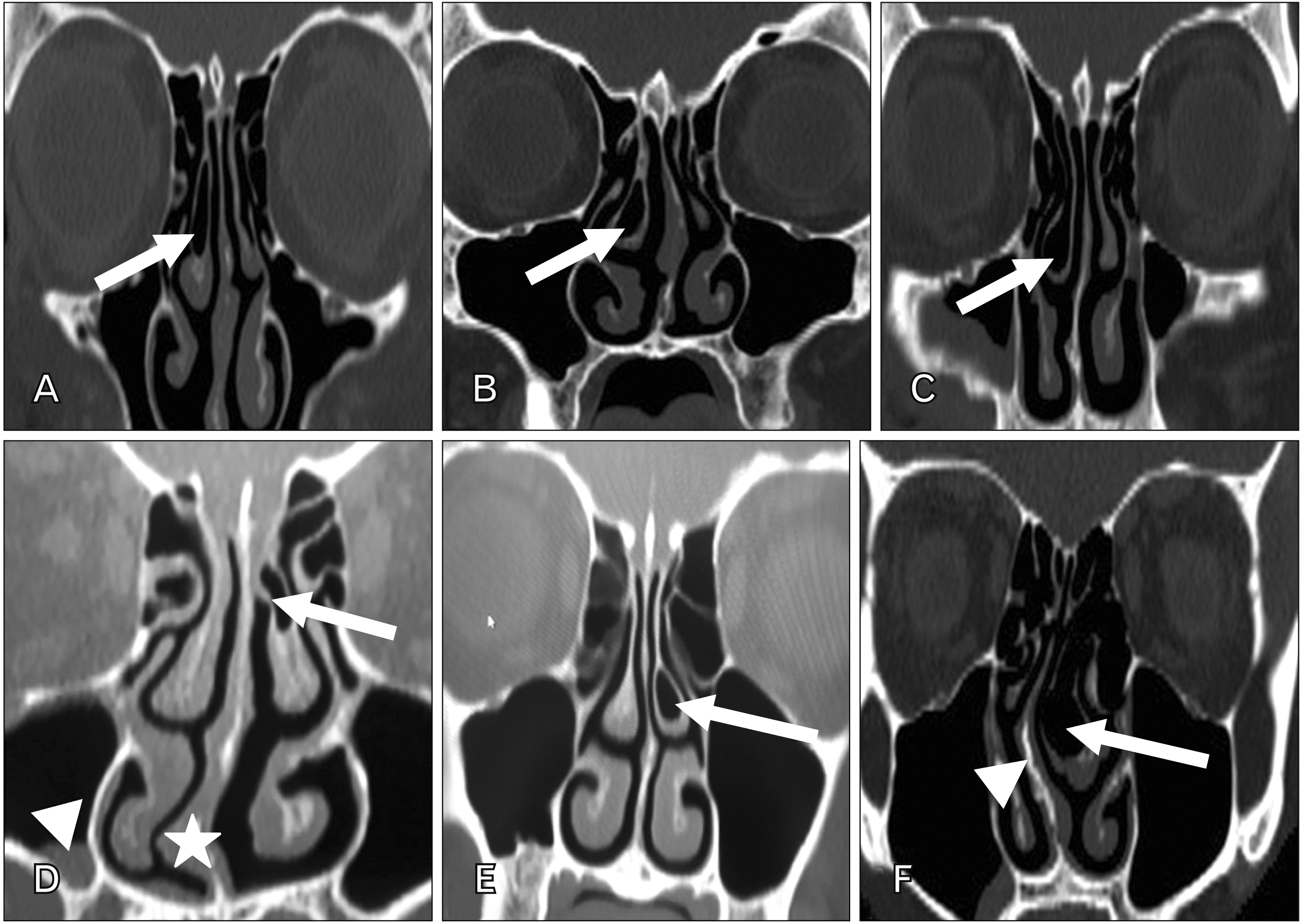

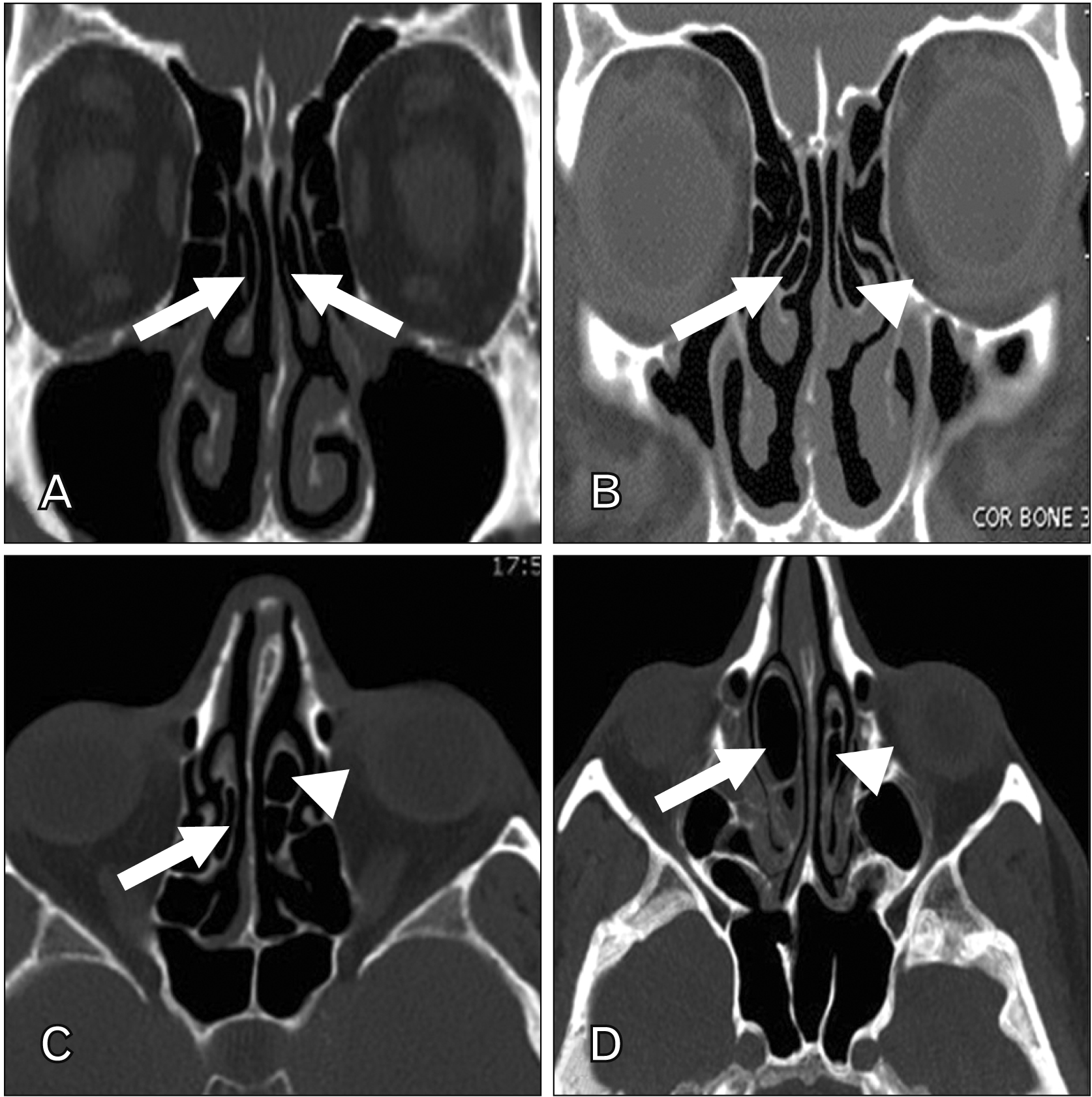
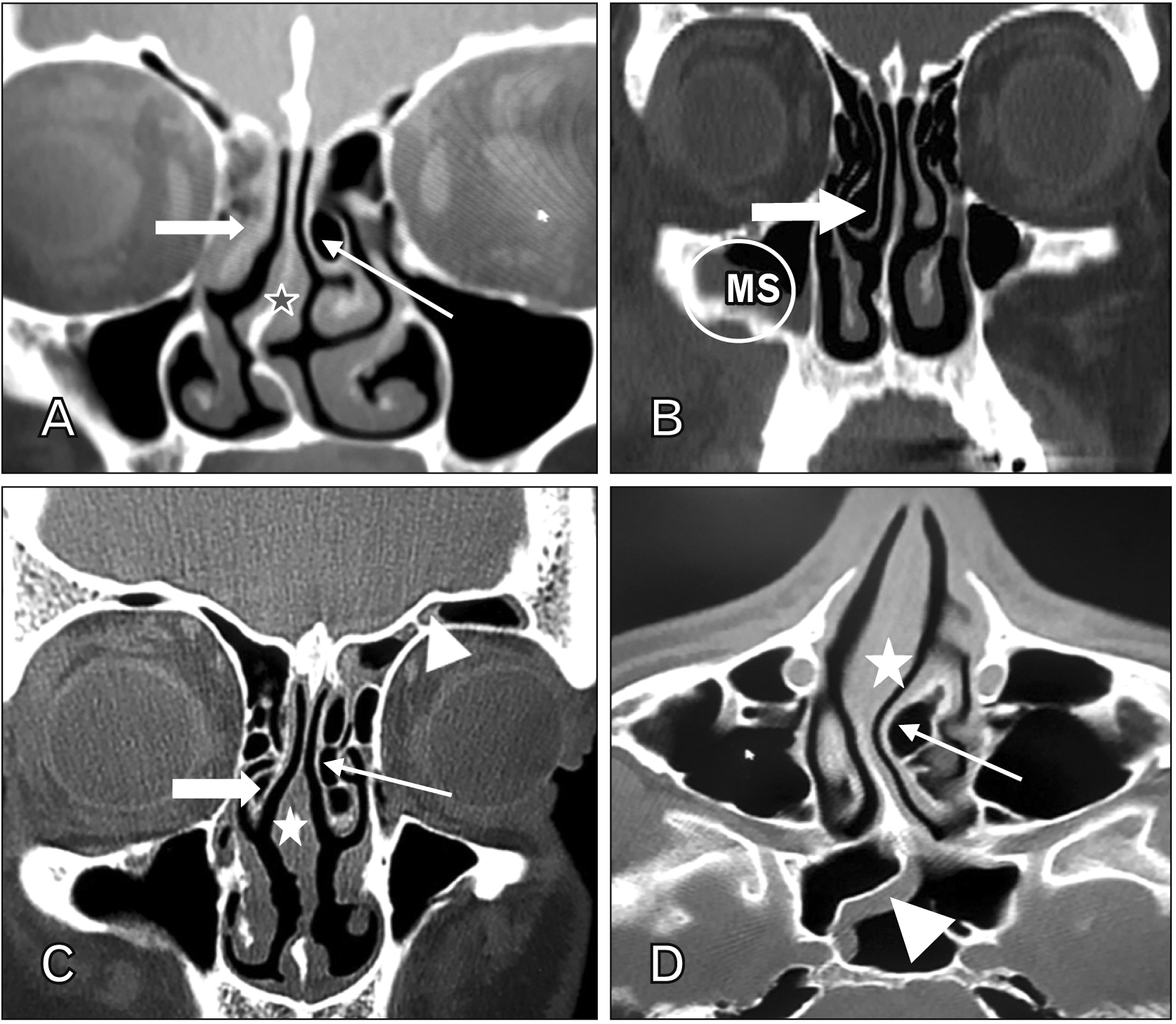
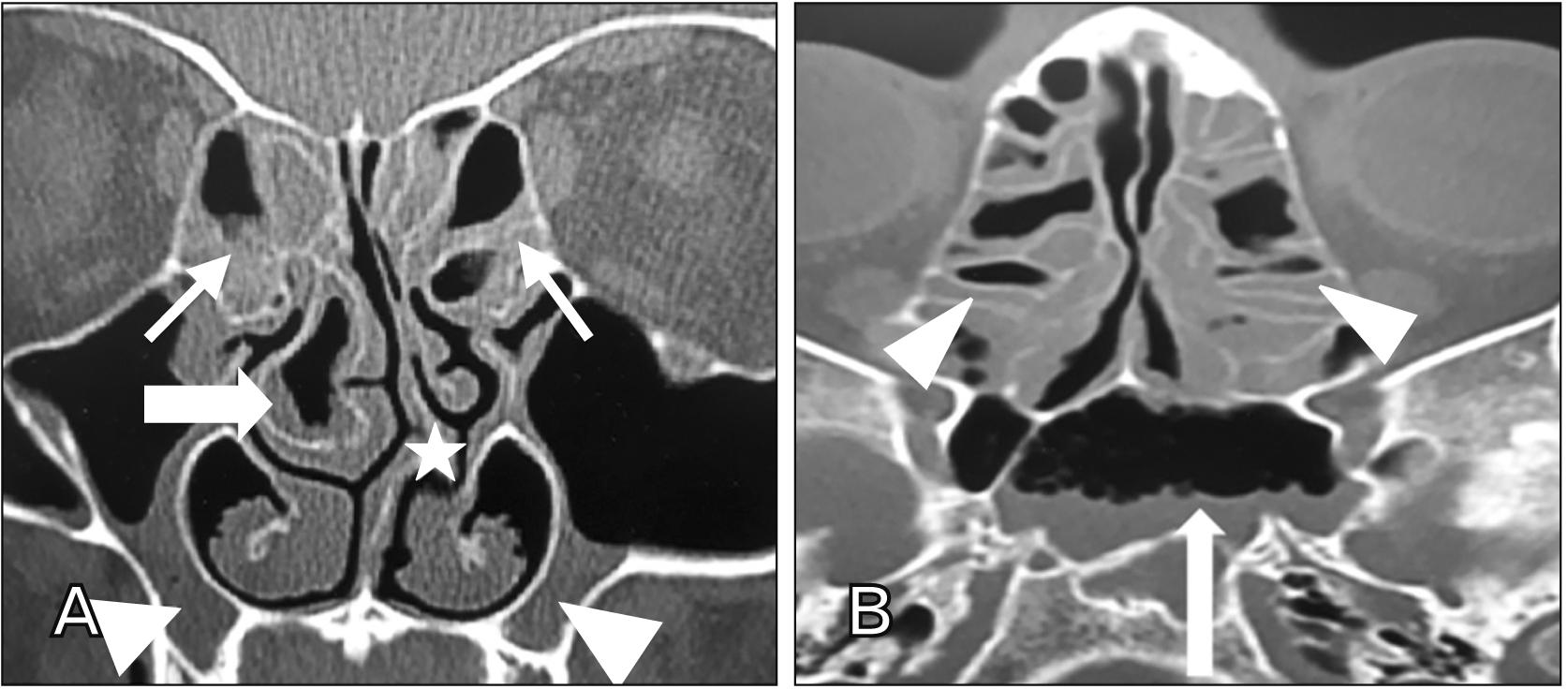




 PDF
PDF Citation
Citation Print
Print




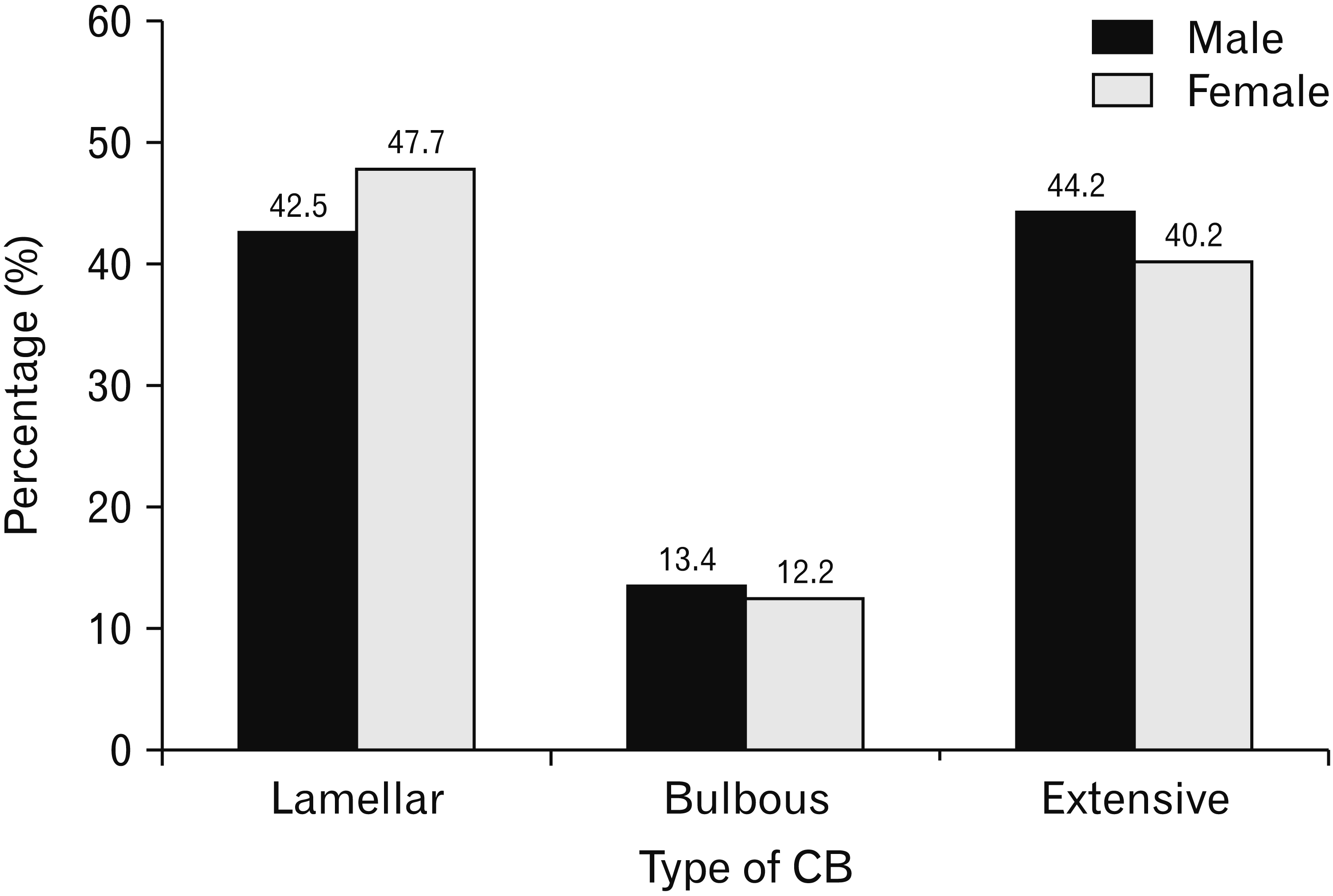
 XML Download
XML Download